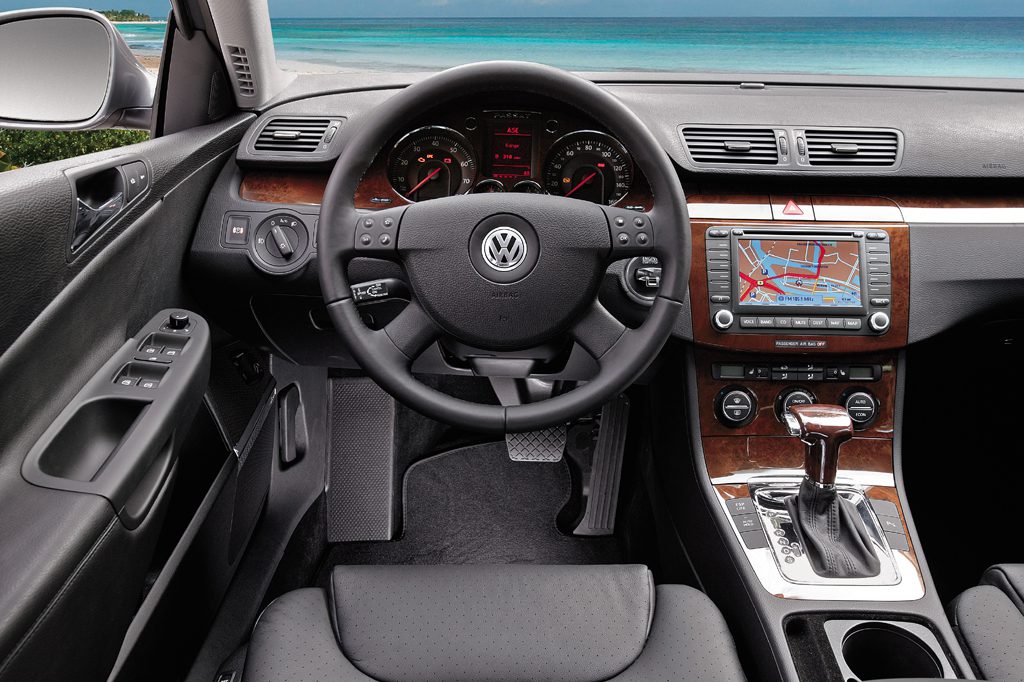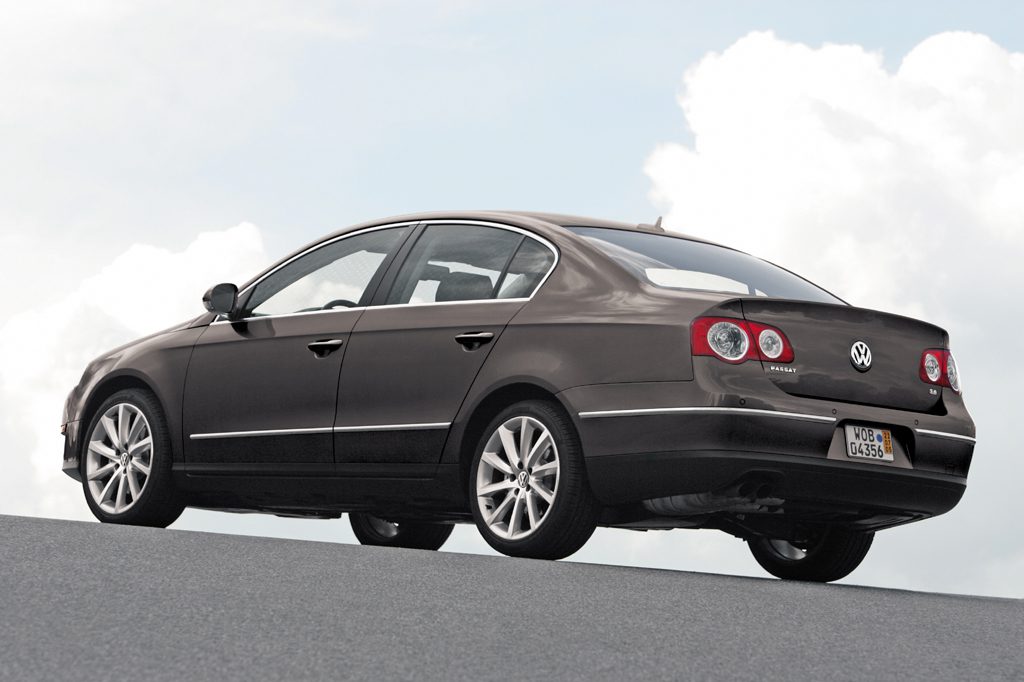| Midsize car; Built in Germany |
|
|
| Good condition price range: $7,400 – $19,000* |

2006 Volkswagen Passat

2006 Volkswagen Passat

2006 Volkswagen Passat
| Pros: |
|
| Cons: |
|
Volkswagen said four-cylinder models would account for 80 percent of Passat sales, and a sparsely-optioned Value Edition or 2.0T has indeed been the smart new-car choice, due to hefty prices for lavishly-equipped versions. Near-average resale values help keep secondhand prices reasonable. In materials quality and driving poise, Passat was once a match for cars in the premium-midsize class, but the latest edition struggles to justify such comparisons.
Overview
Volkswagen redesigned its midsize car for 2006, with fresh styling, larger dimensions, and more power. Sixth-generation Passat sedans arrived first; wagons debuted later in the model year.
The 2006s retained virtually the same wheelbase as the 1998-2005 sedans, but their bodies grew 3 inches longer and 3 inches wider overall, promising 2.4 inches of additional rear leg space. Available features new to Passat included a navigation system and steering-linked bi-xenon headlamps, plus manual and automatic transmissions with six speeds instead of five.
Base engine remained a turbocharged four-cylinder, but it was a 200-horsepower 2.0-liter versus the prior 170-horsepower 1.8-liter. The 2.0-liter was used in the Value Edition and 2.0T models. These came with front-wheel drive and either six-speed transmission. The V6 was now a 280-horsepower 3.6-liter, versus a 190-hp 2.8-liter, and was used in the 3.6 models.
Passat V6 models came only with an automatic transmission, and were available with VW’s 4Motion all-wheel drive. Volkswagen said a diesel model would not be available before the 2008 model year.
Antilock four-wheel disc brakes and antiskid/traction control were standard; so were front torso side airbags and head-protecting curtain side airbags. Rear torso side airbags were optional.
Four-cylinder models came with 16-inch wheels; 17s were optional on 2.0T models and standard on 3.6 editions. The 3.6 was available with 18-inch wheels and a sport suspension. Leather upholstery was optional on 2.0T and 3.6 models, with wood interior trim available on 3.6s only. All models had air conditioning, but the 3.6 version added dual-zone automatic control. A navigation system was optional.
With the Passat, Volkswagen competed against the Honda Accord, Mazda 6, and Toyota Camry.
Yearly Updates
| 2007 Passat Adaptive cruise control was a new option for 2007 models. Passat came in base, 2.0T, and 3.6 versions, with AWD available only for the 3.6. Firmer suspension tuning was used for the Sport Package, optional for 2.0T and 3.6 models. |
| 2008 Passat The 2008 Volkswagen Passat got several new trim levels. Sedans and station wagons were offered in Turbo, Komfort, Lux, and 4Motion VR6 models. The front-drive VR6 sedan was new and powered by a 280-hp 3.6-liter V6. |
| 2009 Passat For 2009, Passat was no longer offered with a manual transmission, a V6 engine, or all-wheel drive. |
| 2010 Passat The 2010 Volkswagen Passat received slightly freshened styling. |
